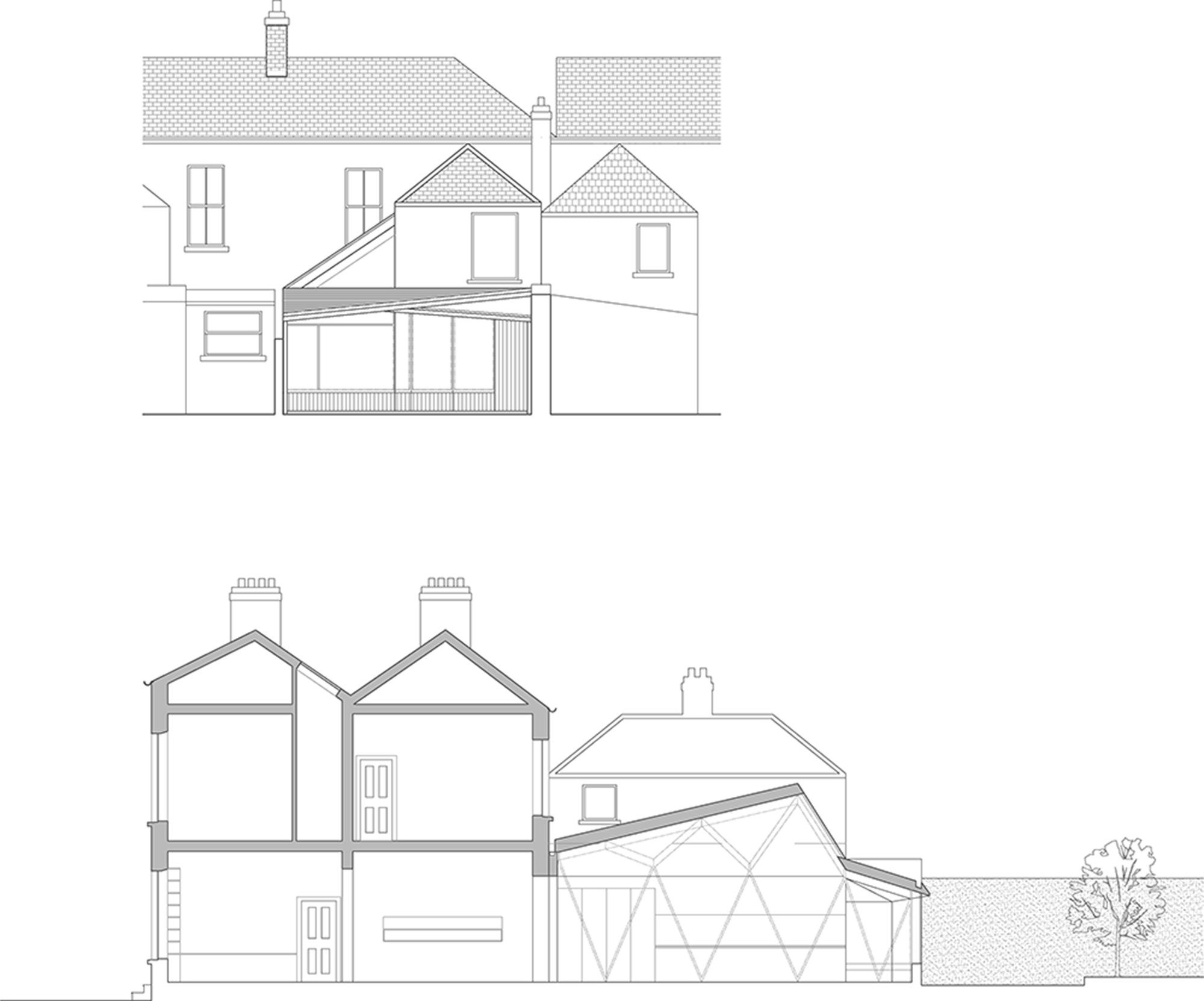This impressive renovation project was carried out by a firm named NOJI Architects and was focused on a Victorian residence located in Dublin, Ireland. Completed in 2014, the house offers a living surface of 1,668 square feet and flaunts a new plywood structure that has an eye-catching design based on interconnecting triangular forms.
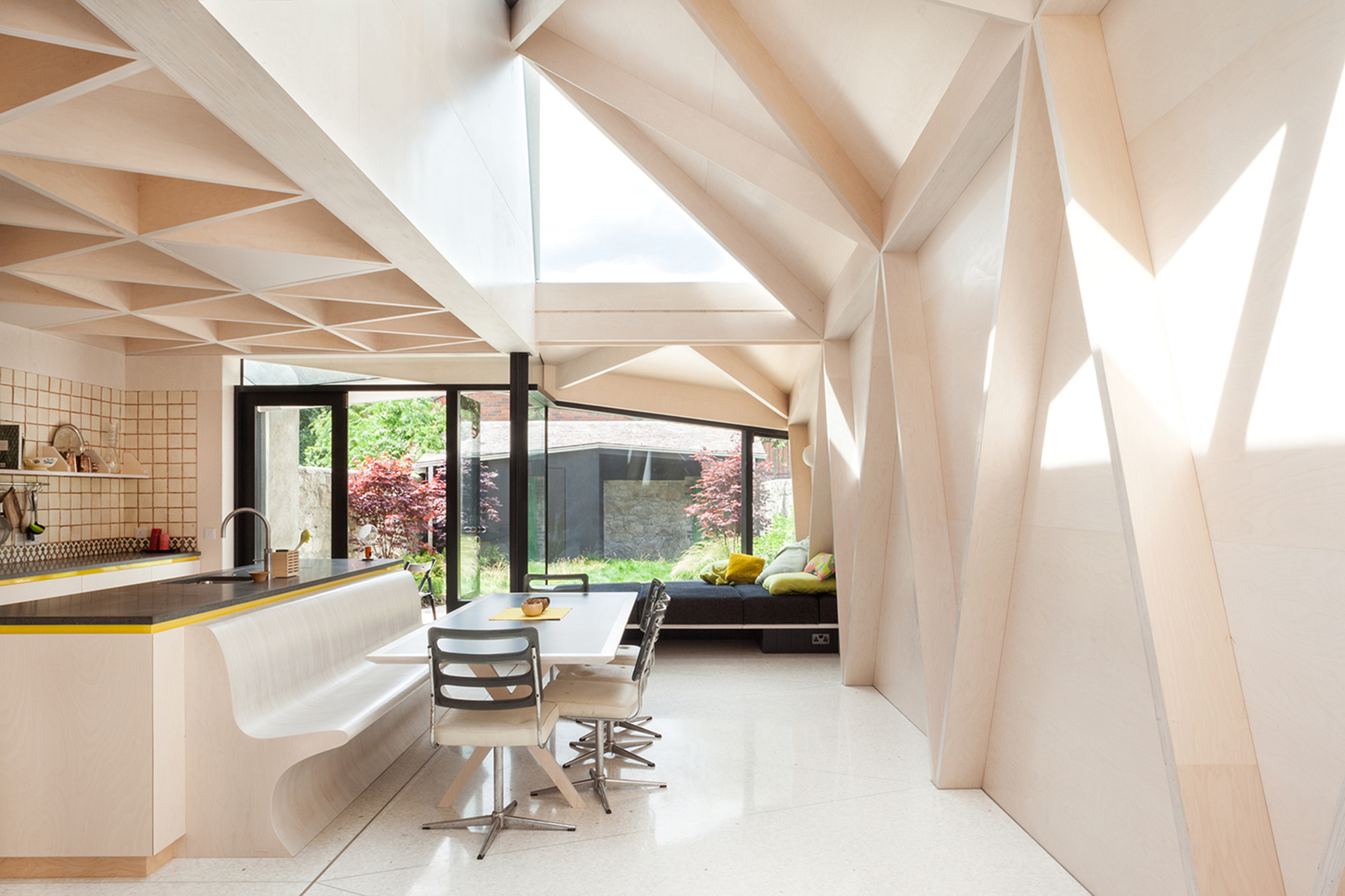
The first floor is supported by a series of plywood glulam beams, which are backed in turn by a cruciform steel column. The idea to use plywood for the new structure makes sense, as the material boasts certain aesthetic advantages, not to mention its economic properties. Glass was also used extensively for the windows, sliding doors and skylights, all of which allow natural light to flow throughout the living areas without obstruction.
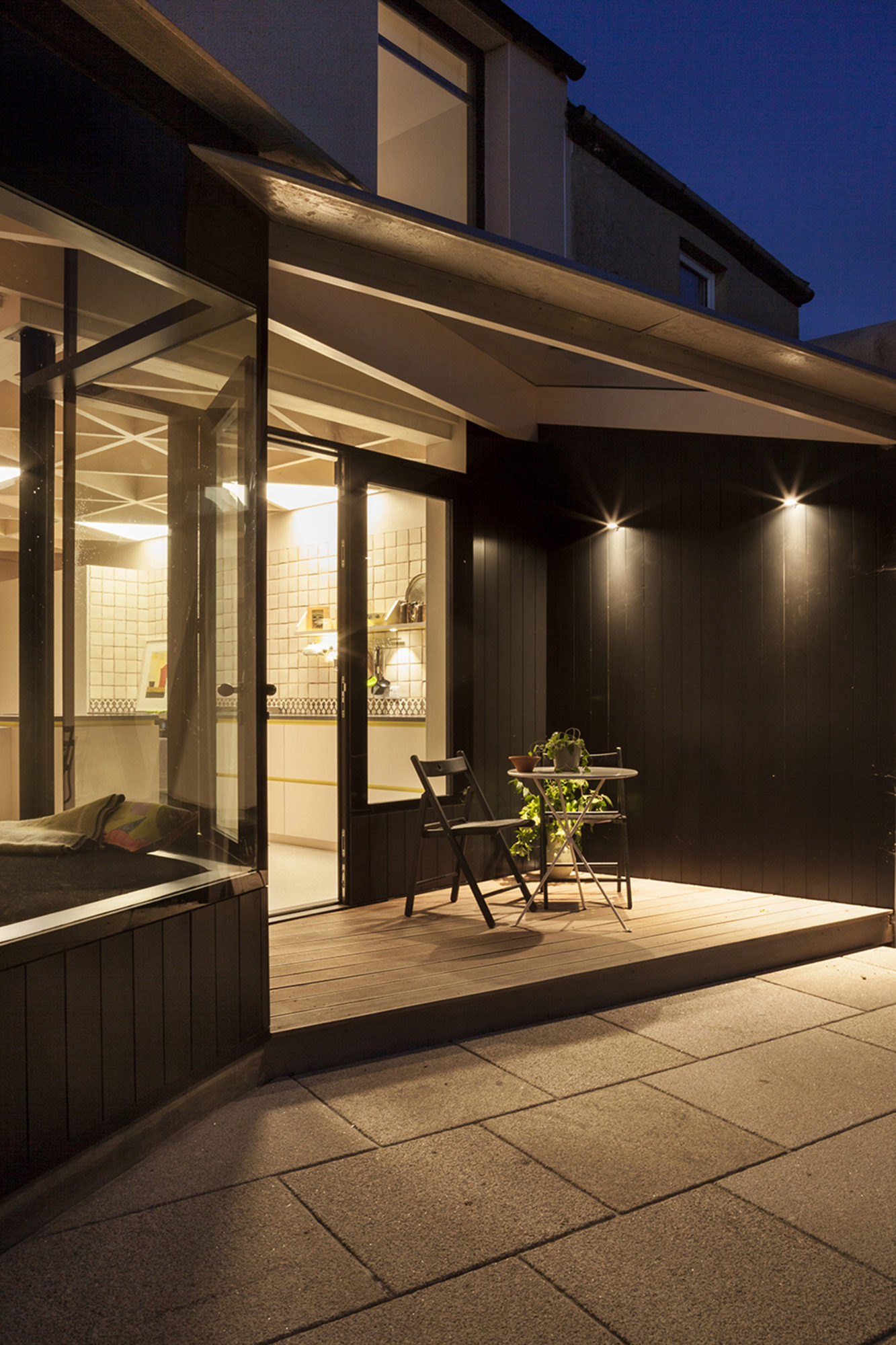
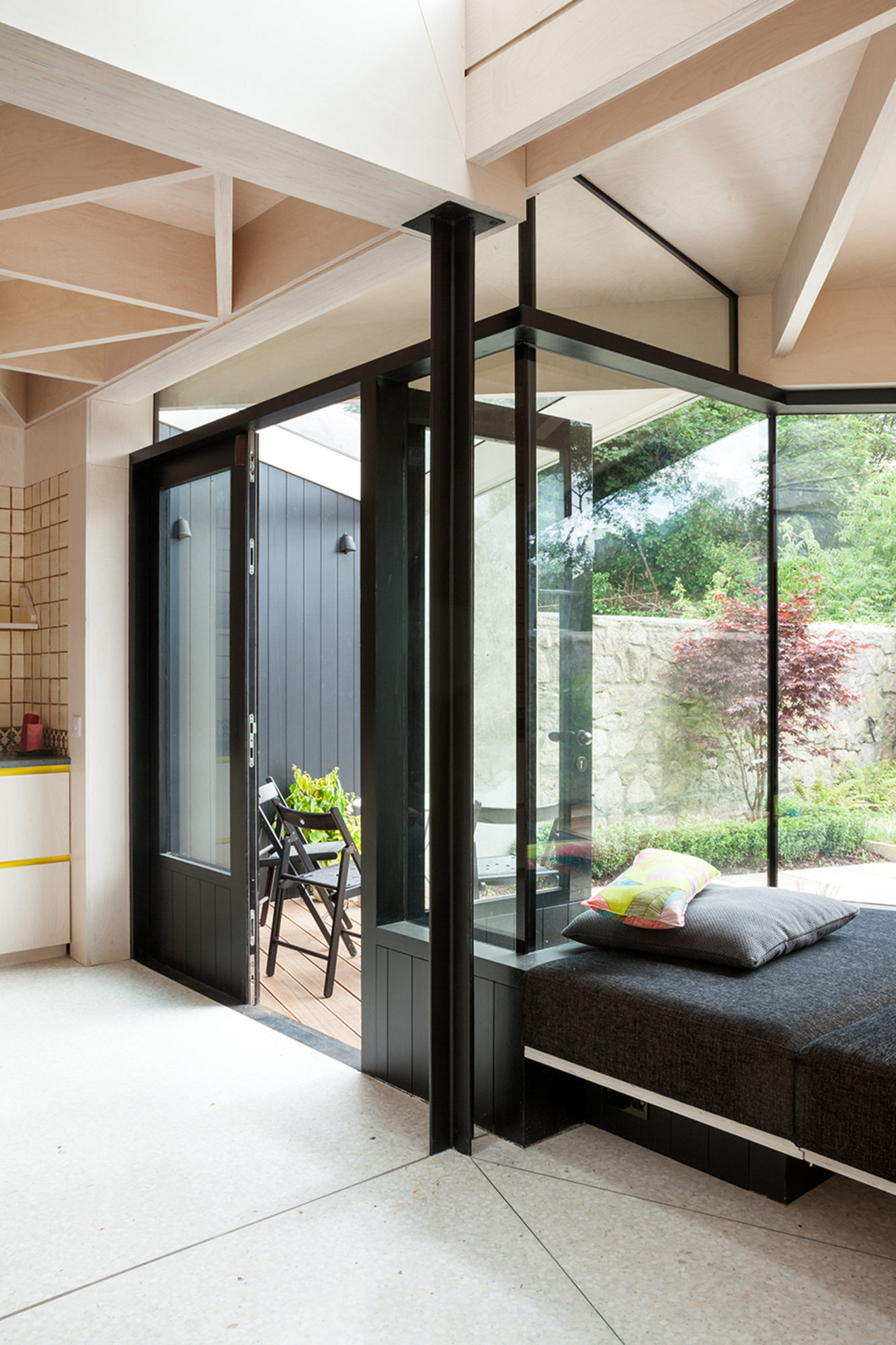
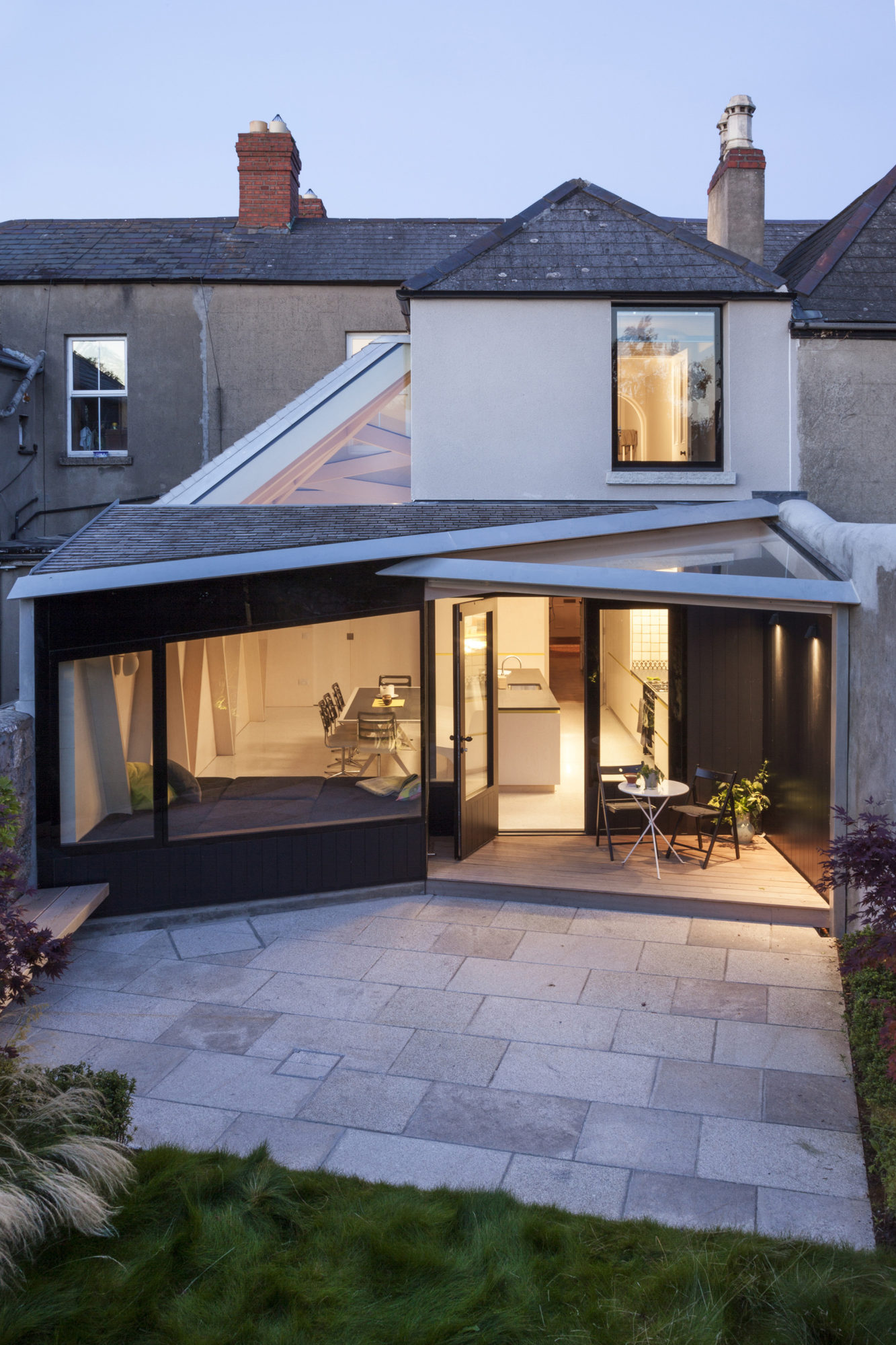
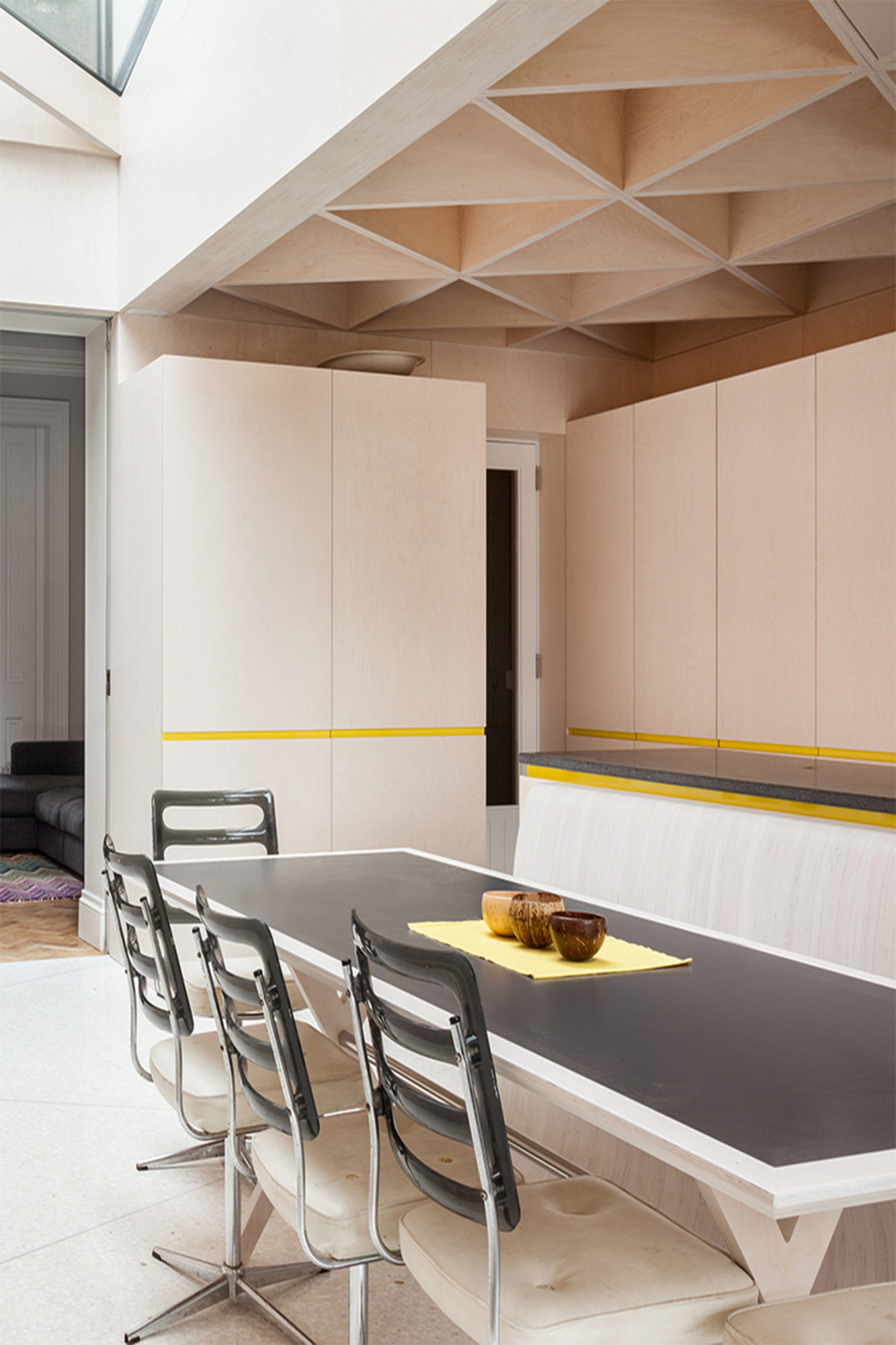
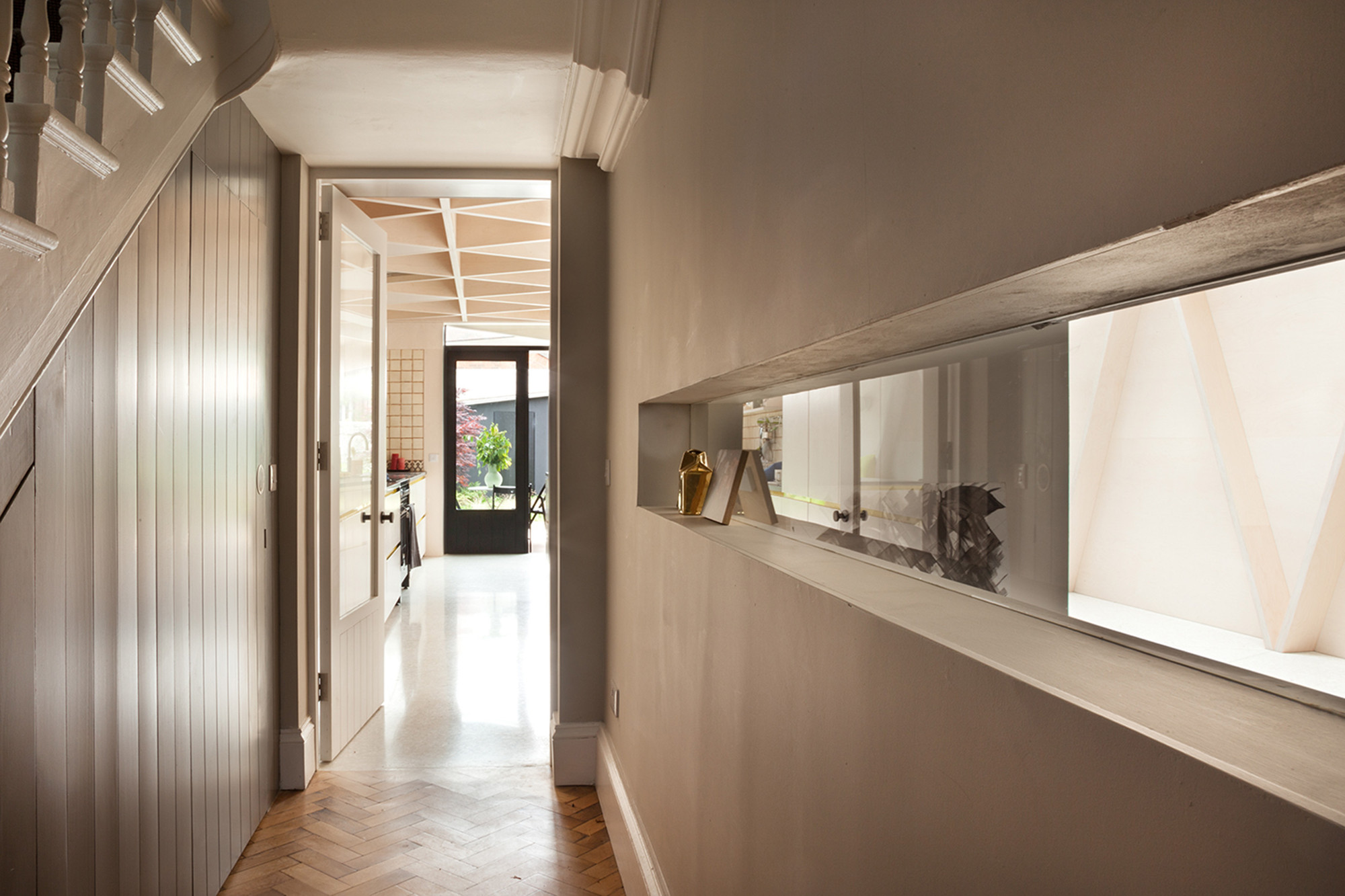
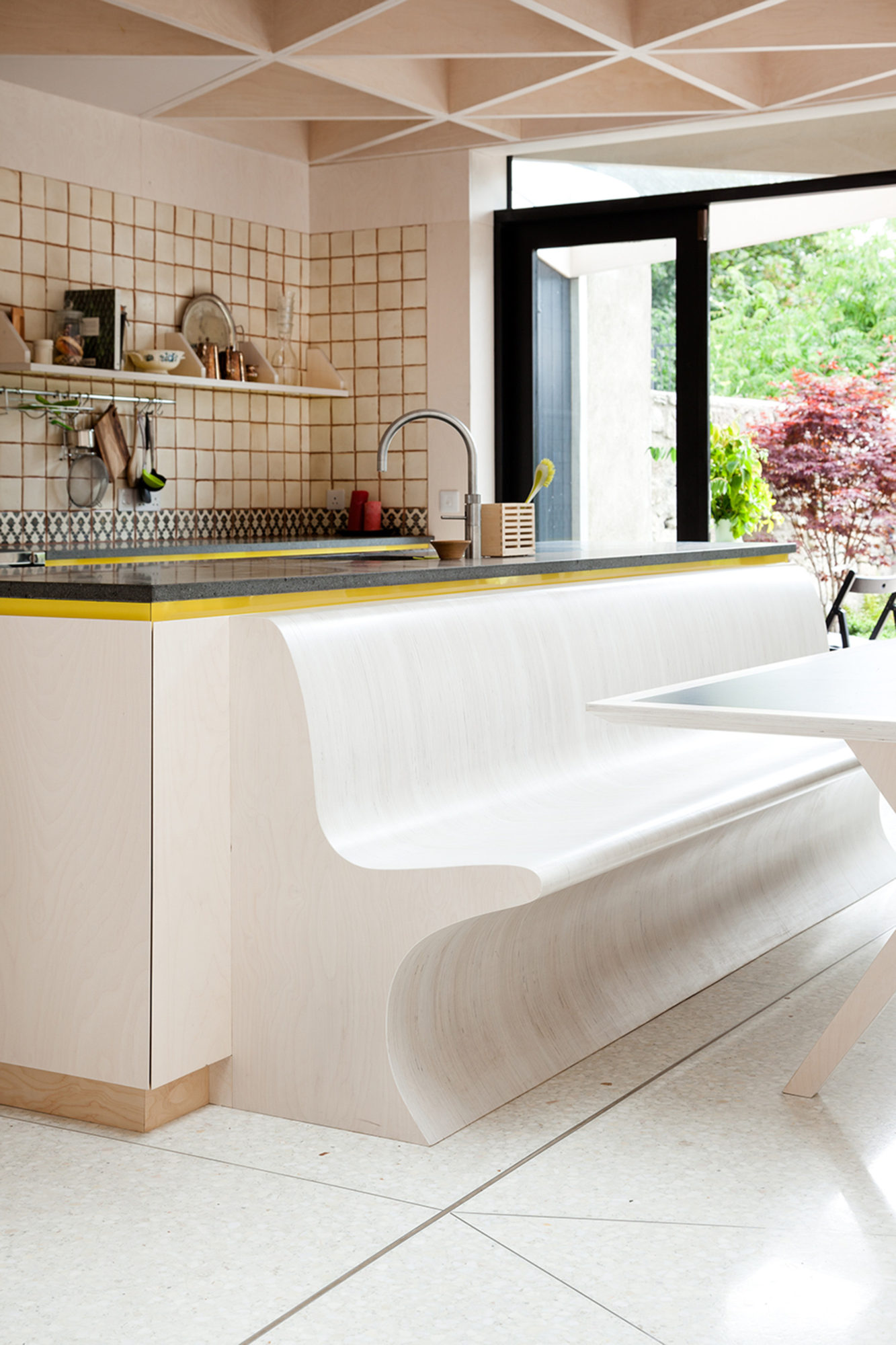
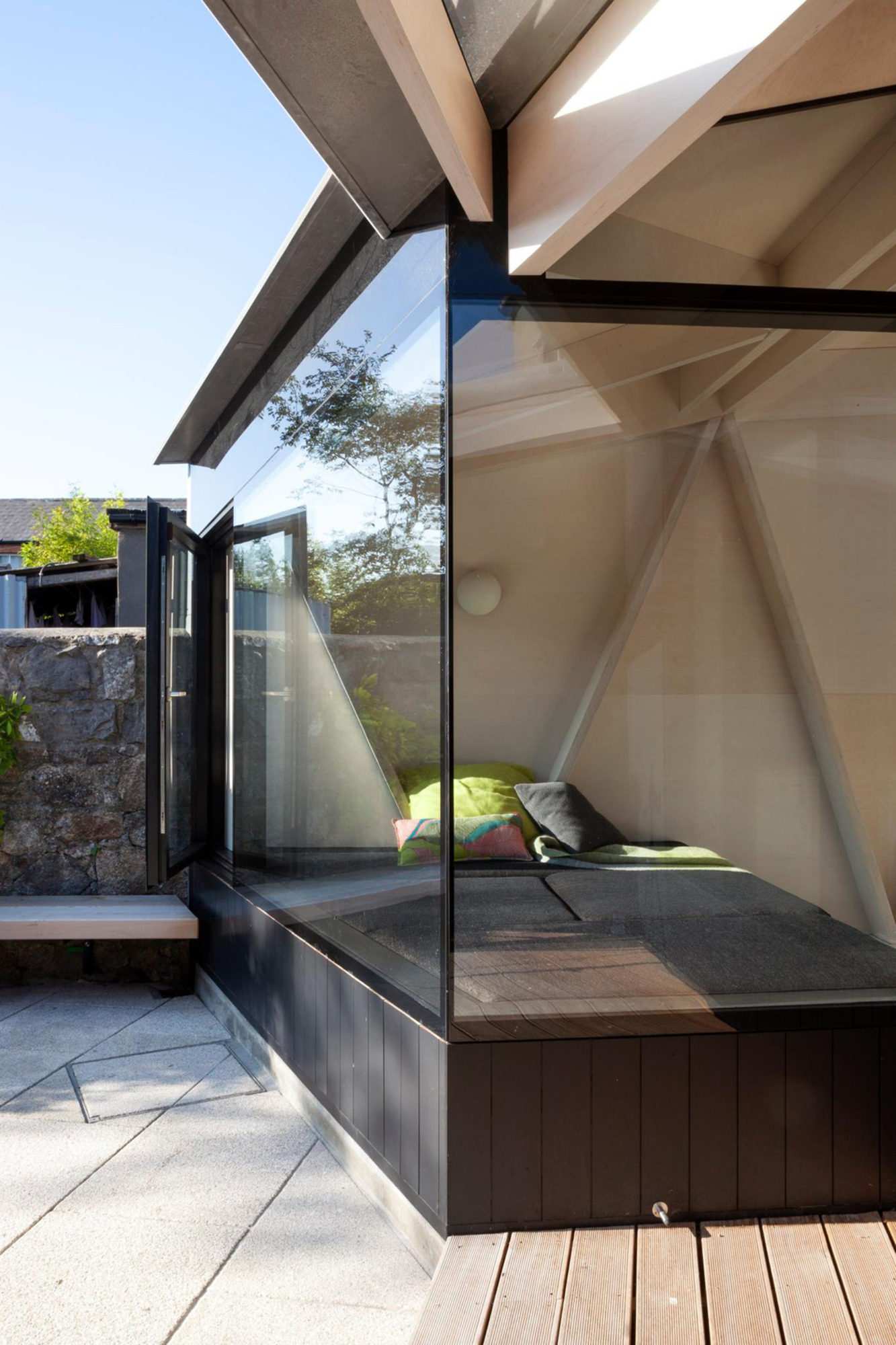
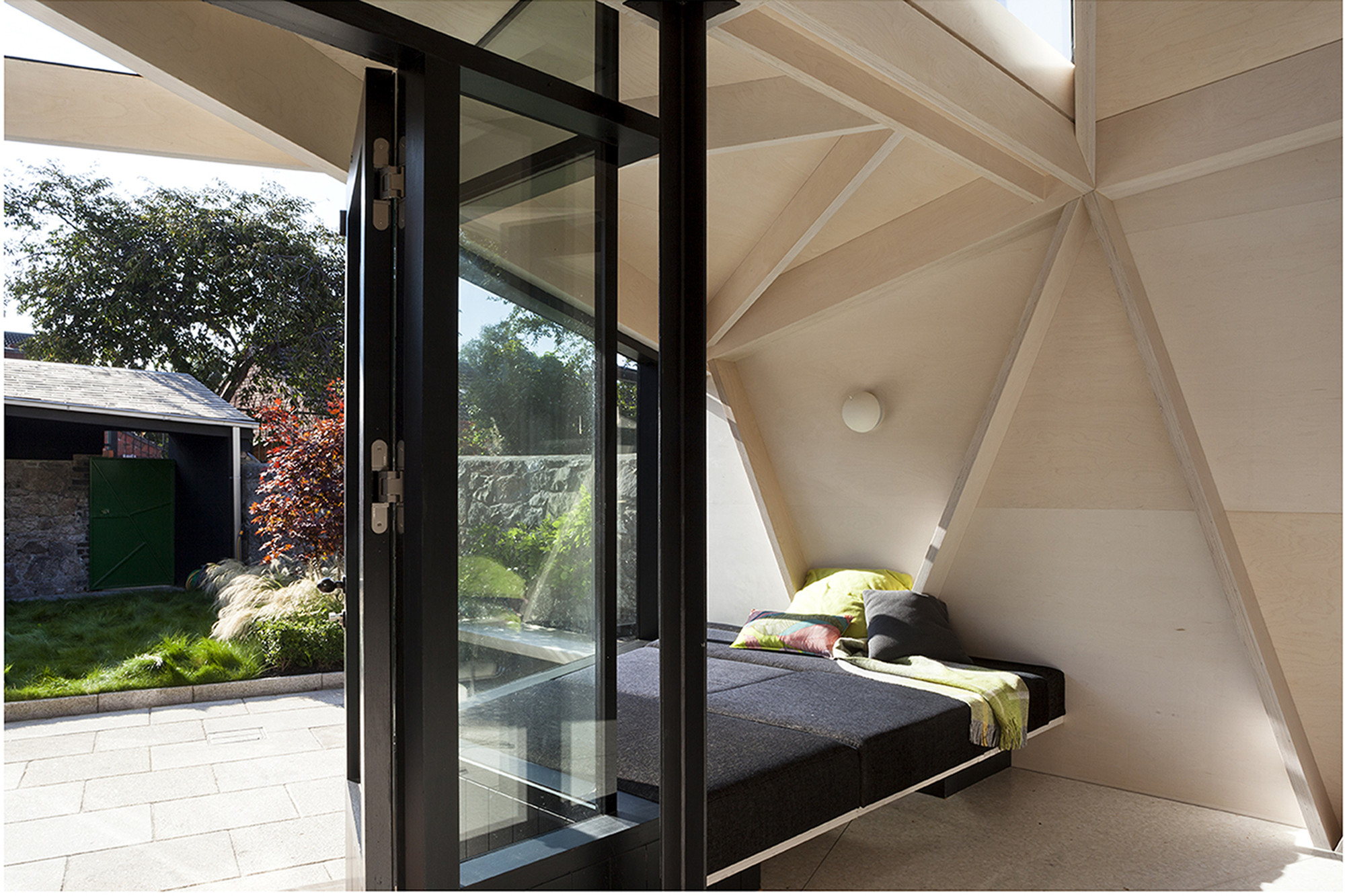
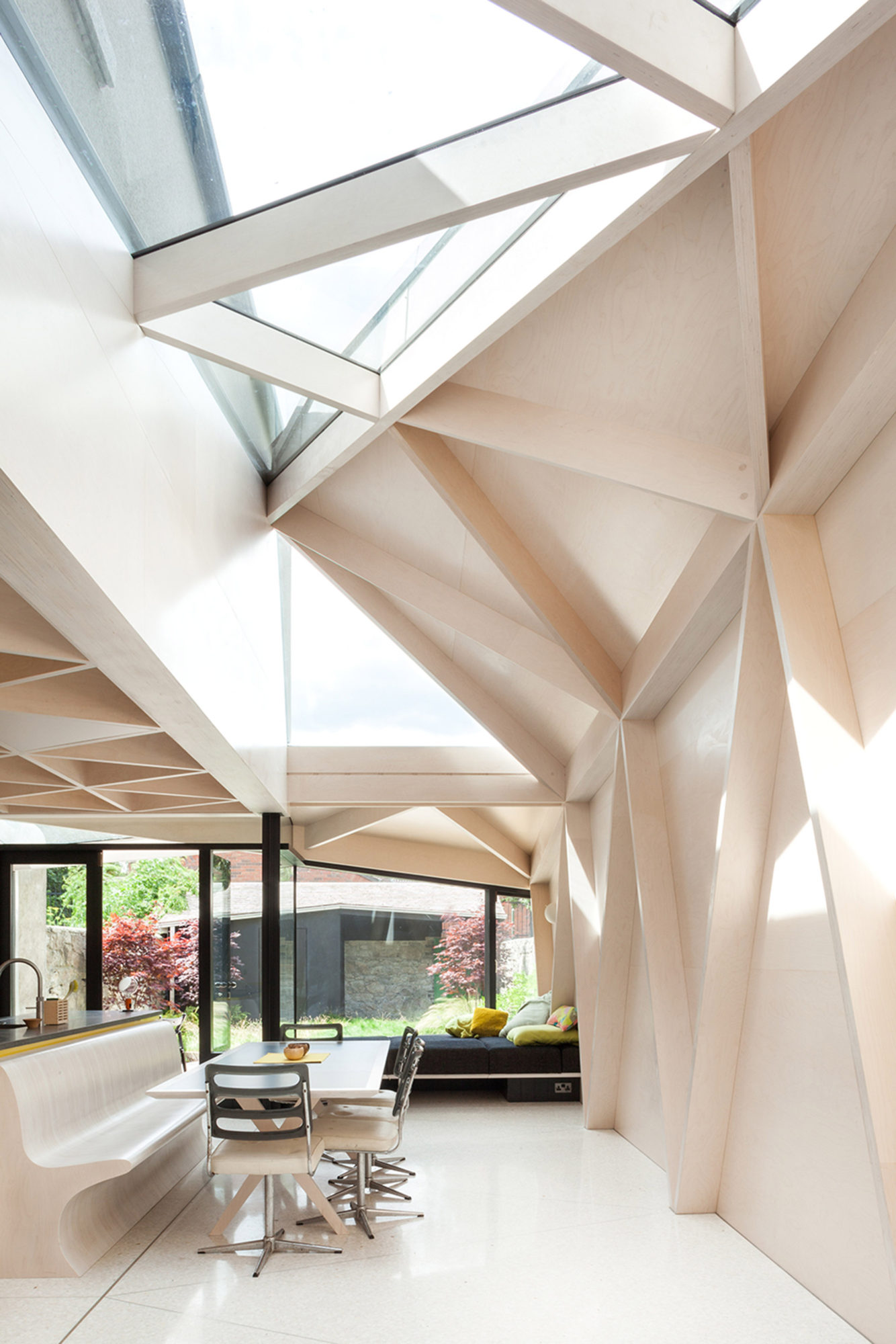
From the architect:
The House
This Victorian two storey house was dark and damp with a poorly constructed conservatory as the main source of light and link to the garden. The re design of the ground floor knocked the ground floor walls in the return to open out the kitchen into a new extended kitchen/ dining space. The layout maximises the South West orientation and allows both internal window seat and external covered areas to relate to the garden.
The Form
The form of the new build plywood structure is a series of interconnecting triangular plains. These plains are positioned to allow light deep into the plan as the sun moves across the house during the day. The plains are supported on a prefabricated plywood lattice structure supported off a glulam beam.
The Structure
1. The plywood glulam beams support the first floor and are in turn supported using a cruxiform steel column as the only structural steel used in the build. The junction between the two glulam beams was created using a simple lap joint between the beams with long screw connections.
2.The glulam beam frames the ceiling over the kitchen, the ceiling is made up of a prefabricated triangular plywood module laminated in situ creating a diagrid structure and braced by a skin of plywood, acting as the floor for the first floor.
3. The structure over the new build area to the side of the glulam beam is a skewed lattice structure, made up of prefabricated plywood beams interconnecting to form the structural frame and to carry the glass and solid plains above.
Efficiency and Value
Plywood is used in three very different structural solutions within this project for its aesthetic, structural and economic properties. The structure was prefabricated off site where possible reducing time on site and increasing accuracy and quality of the build.
This project was a multi-disciplinary effort between the Contracting firm , the Structural engineers and the Architect and shows that with early collaboration between all parties a well-considered and well-built solution can be found to the brief.
Architects: NOJI Architects
Location: Dublin, Ireland
Collaborators: John Monahan and Claire Faulkner
Area: 155.0 sqm
Project Year: 2014
Photographs: Alice Clancy

